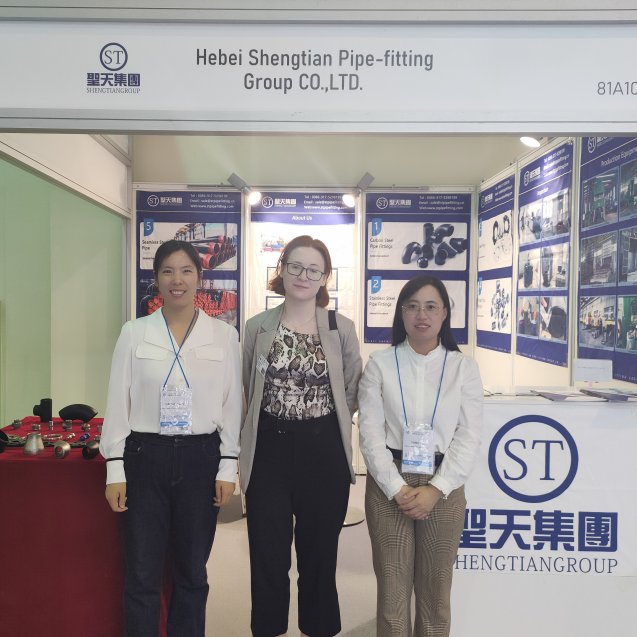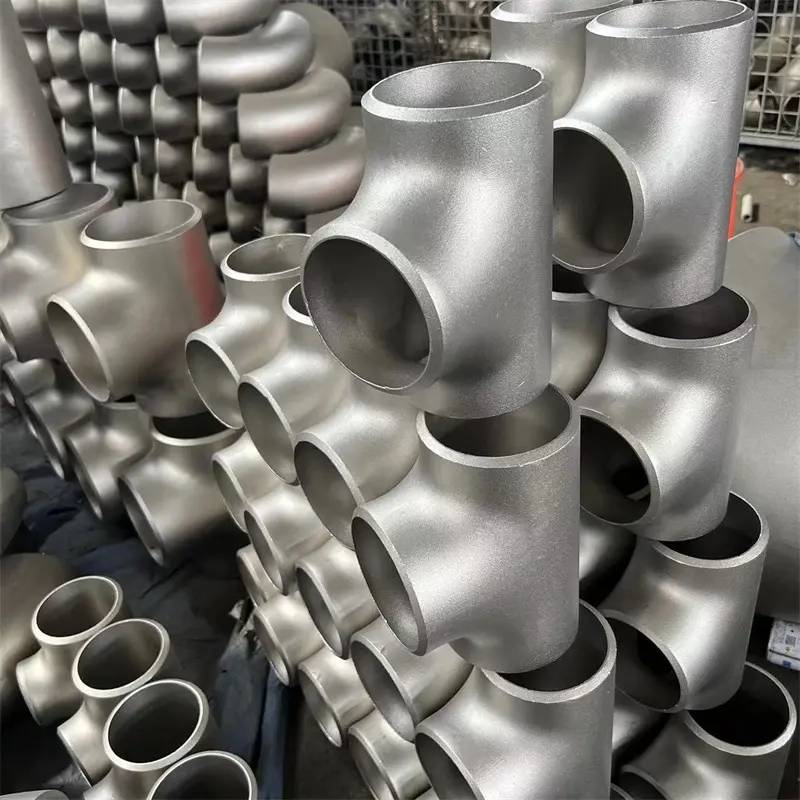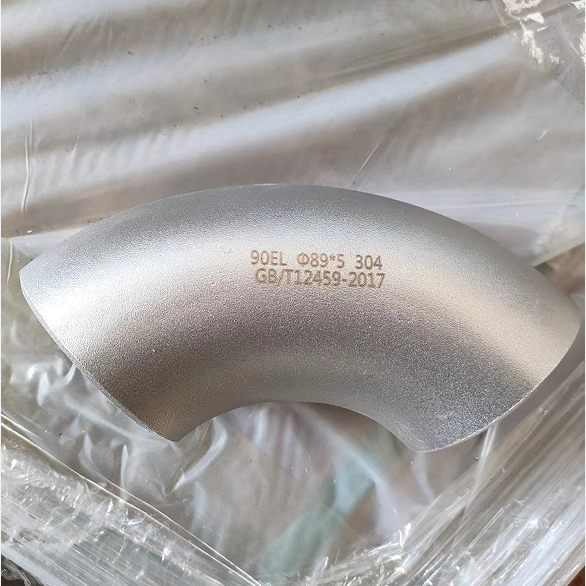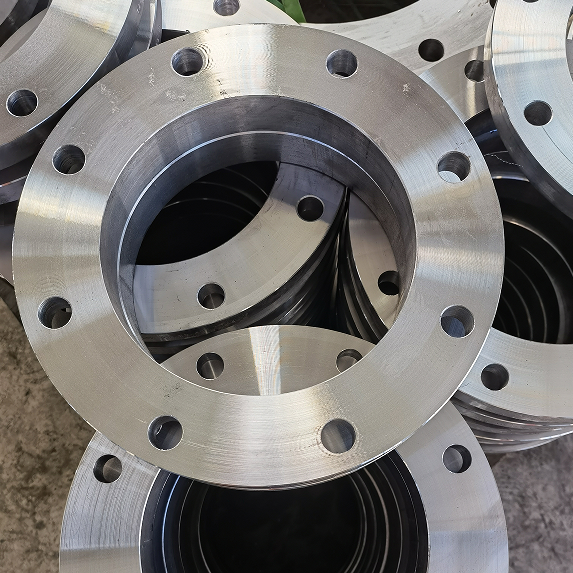1. Hot push forming
The hot push pipe elbow forming process is the process of using a dedicated elbow pushing machine, core mold, and heating equipment to move the blank on the mold forward under the push of the pushing machine, which is heated, expanded, and twisted into shape during the movement. The deformation characteristic of hot pushed elbows is to determine the diameter of the pipe blank based on the rule of constant volume before and after plastic deformation of metal data. The selected pipe blank diameter is smaller than the elbow diameter, and the deformation process of the blank is controlled by the core mold, causing the metal movement at the inner arc to be compressed, compensating for other parts that have been thinned due to expansion, and then obtaining an elbow with uniform wall thickness. The hot push pipe elbow forming process has the characteristics of beautiful appearance, uniform wall thickness, and continuous operation, which is suitable for mass production. Therefore, it has become the primary forming method for carbon steel and alloy steel pipe elbows, and is also applied in the forming of certain standard stainless steel pipe elbows.
The heating methods in the forming process include medium frequency or high frequency induction heating (the heating ring can be multi ring or single factor), flame heating and reverberatory furnace heating. The heating method selected depends on the requirements of the formed products and the energy situation
Resolution.
2. Stamping forming
Stamping forming pipe elbow is the earliest forming process applied to batch production of seamless pipe elbows. Now, it has been replaced by hot extrusion or other forming processes in commonly used standard pipe elbow production. However, in some standard pipe elbows, due to the small production quantity, excessively thick or thin wall thickness. The product is still in use when there are special requirements. The stamping forming of the pipe elbow selects a pipe blank that is equal to the outer diameter of the pipe elbow, and uses a press to directly restrict the forming in the mold. Before stamping, the tube blank is placed on the lower mold, and the inner core and end mold are loaded into the tube blank. The downward movement of the upper mold is initially restricted, and the bend is formed by the binding of the outer mold and the support effect of the inner mold.
Compared with hot pressing process, the appearance quality of stamping forming is not as good as the former; The outer arc of the stamped pipe elbow is in a stretching state during forming, and there is no remaining metal in other parts to compensate, so the wall thickness at the outer arc is reduced by about 10%. However, due to its applicability to single piece production and low cost, the stamping pipe elbow process is often used for the production of small batches and thick walled elbows.
Stamped pipe elbows can be divided into two types: cold stamping and hot stamping. Usually, cold stamping or hot stamping can only be selected based on the nature of the data and equipment. The forming process of cold kneading pipe elbow is achieved by using a dedicated pipe elbow forming machine to place the tube blank into the outer mold. After the upper and lower molds are closed, the tube blank moves along the gap reserved by the inner and outer molds under the push of the push rod, completing the forming process.
The pipe elbow made by using the internal and external mold cold kneading process has a beautiful appearance, uniform wall thickness, and small scale error. Therefore, this process is often used for the formation of stainless steel pipe elbows, especially thin-walled stainless steel pipe elbows. The precision requirements for the internal and external molds used in this process are high; The wall thickness error requirements for pipe blanks are also quite strict.
3. Other forming methods
In addition to the three commonly used forming processes mentioned above, there is also a forming process for seamless pipe elbows that involves kneading the tube blank into the outer mold and then shaping it through the inner ball of the tube blank. However, this process is relatively messy, time-consuming to operate, and the forming quality is not as good as the aforementioned process, so it is rarely used.
Stamped pipe elbows can only be made with small diameters. If the pipe standard is too large, it is difficult to buy finished stamped pipe elbows, and welding pipe elbows can only be used. Because there are more welding seams on welded pipe elbows, the cutting function is not as good as stamping pipe elbows, which is prone to corrosion and leakage. And because stamped pipe elbows are produced in batches, they are cheaper in price than welded pipe elbows. Now there are precision cast pipe elbows that can be made of 316L, with better corrosion resistance.
 Shengtian Group successfully participated in the Russian Oil and Gas Exhibition
Shengtian Group successfully participated in the Russian Oil and Gas Exhibition
 Production process of stainless steel tees
Production process of stainless steel tees
 ASME B16.9 Stainless Steel Elbow Dimension
ASME B16.9 Stainless Steel Elbow Dimension
 The processing method of flanges
The processing method of flanges